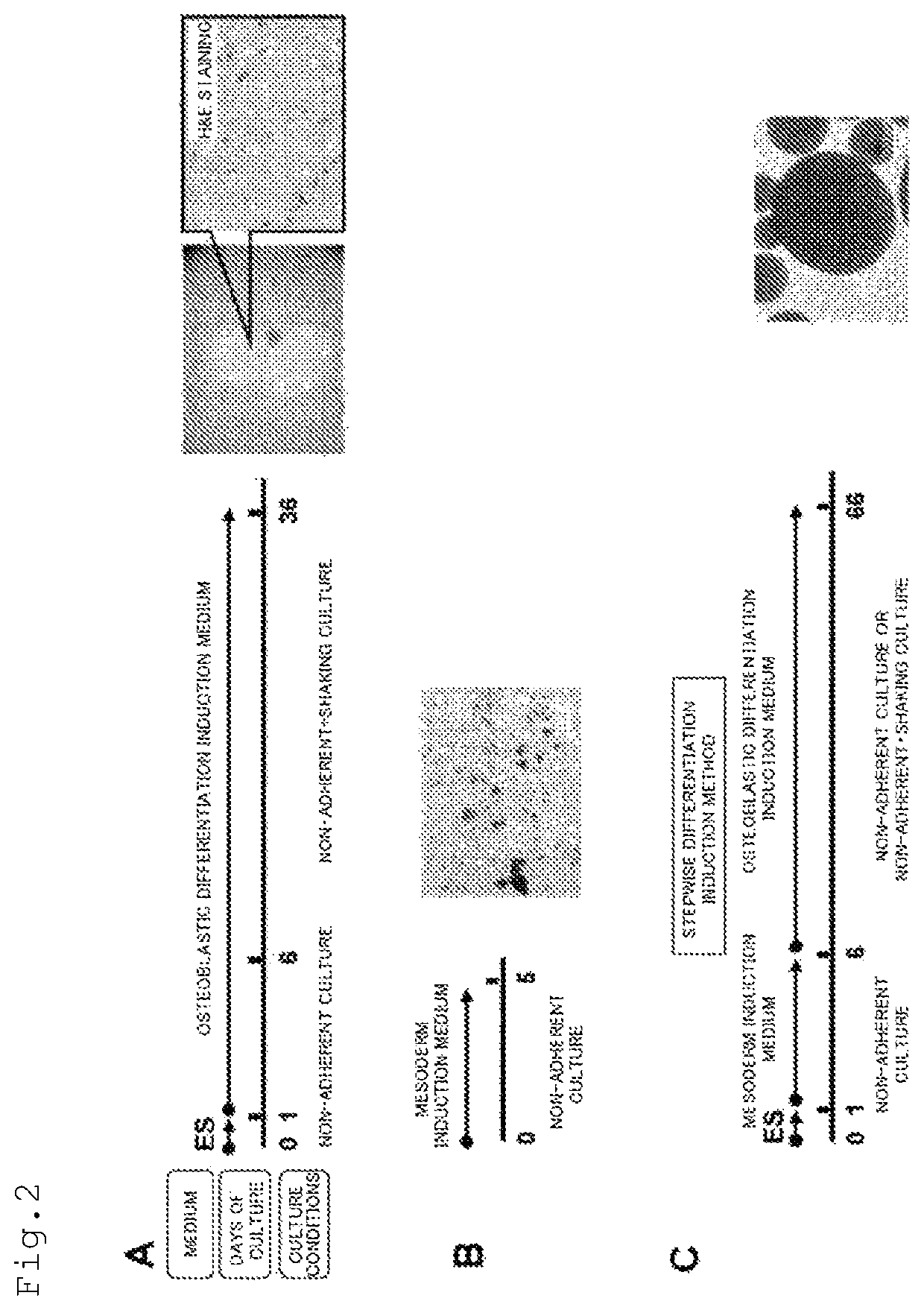Method for producing osteoblast cluster using human iPS cells
a technology of human ips cells and clusters, which is applied in the field of generating an osteoblast construct using ips cells, can solve the problems of not always providing good prognosis in surgical intervention, and not being able to provide a sufficient bone regeneration
- Summary
- Abstract
- Description
- Claims
- Application Information
AI Technical Summary
Benefits of technology
Problems solved by technology
Method used
Image
Examples
examples
(1-1) Culture of Human iPS Cells
[0086]For an experiment, a human skin fibroblast-derived iPS cell line (409B2: RIKEN BRC CELL BANK) was used. SNLP76.7-4 cells (provided by Dr. Allan Bradley of the Sanger Institute, UK) were used as feeder cells.
[0087]SNLP76.7-4 feeder cells were seeded in a 10 cm cell culture plate (coated with 0.1% gelatin), and cultured using a DMEM medium (sodium pyruvate-free: Nacalai Tesque, Cat. #08459-35)] containing 7% fetal bovine serum (FBS: Japan Bio Serum, Lot #JBS-011501), 2 mM L-glutamine (Thermo Fisher Scientific, Cat. #25030-081), 50 U penicillin, and 50 μg / ml streptomycin (Thermo Fisher Scientific, Cat. #15140-122). The medium was changed every 2 days. Before the culture of iPS cells, the SNLP76.7-4 feeder cells were treated with 12 μg / ml mitomycin C (Nacalai Tesque, Cat. #20898-21) for 2.5 hours, and seeded in a 10 cm cell culture plate (coated with 0.1% gelatin) at a concentration of 1.5×106 cells / dish.
[0088]iPS cells were seeded on the SNLP76.7-4...
PUM
| Property | Measurement | Unit |
|---|---|---|
| culture time | aaaaa | aaaaa |
| culture time | aaaaa | aaaaa |
| inclination angle | aaaaa | aaaaa |
Abstract
Description
Claims
Application Information
 Login to View More
Login to View More - R&D
- Intellectual Property
- Life Sciences
- Materials
- Tech Scout
- Unparalleled Data Quality
- Higher Quality Content
- 60% Fewer Hallucinations
Browse by: Latest US Patents, China's latest patents, Technical Efficacy Thesaurus, Application Domain, Technology Topic, Popular Technical Reports.
© 2025 PatSnap. All rights reserved.Legal|Privacy policy|Modern Slavery Act Transparency Statement|Sitemap|About US| Contact US: help@patsnap.com



